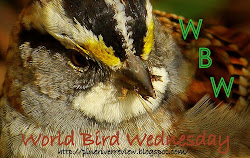Out of Nowhere

It didn't take long for the hardwoods that line the Pine river to shed their leaves and reveal the tangled jumble of naked branches that hide beneath. Gusty winds blew rain storms through the Great Lakes region this week and even the mighty oaks, who usually hold tight to their dead leaves all winter long, had their heads tossed and littered the lawn with a chaos of brown confetti.
The opposite bank from my riverside home is affectionately known as the Green Wall, an iron curtain of impenetrable vegetation that is quickly losing it's density. Beyond that flood plain is Pine River road and a few other homes that stay hidden all summer long behind the illusion of complete deep woods isolation. Soon I will see lights twinkling out there, a sure sign there are others who share this boreal forest sancturary.
My mind was immersed in raking up the leafy fallout and readying it for the mulch pile when I spotted an adult Bald eagle sitting on a rock in the middle of the river a ways down stream. Sprinting into the house I grabbed my camera on the outside chance the bird would hold it's position long enough to pose for a picture. I planned to capture a quick reference shot but as I approached the bank looking for the distant angle the eagle lifted off. Was she teasing me? Time would tell, from my vantage point it looked like the great bird took to a tree further down stream. The chase was on!
The brush along the river is booby trapped with barbed seed pods that cling to clothing with a devilish Velcro ferocity. Already I resembled a human Chiapet. After an ankle bending hundred yards it was time to stick my neck out and see if the big bird was still in the neighborhood. There it was, perched in a tree and out in the open. I scooted back up the bank and moved further along until a flat opening presented itself. I was trembling, my nerves were juiced with adrenalin and the eagle bounced madly teetering on the long end of the 400mm lens. No way was I going to get a clear shot hand held, not at a decent ISO and the low shutter speed the dreary day called for. Finally I rested the camera on the ground with the lens propped up on my knit cap and turned on the LED display screen. It was exasperating fumbling with this primitive set up before the bird showed in the view finder and held steady aim by way of scrunching my cap in various configurations. I put the shutter on a two second delay and clicked. Blurred. I needed better focus. Increasing the LED's magnification I twisted the focus ring until the magnificent bird sharpened. I clicked again and at the count of two the deed was done.
Now I got greedy. I had this angle in the bag, could I move to a better vantage point and improve the background? I slithered out of my hide and scrambled through the woods. About fifty yards further down the line there was a little rise by a utility easement. The Bald eagle still clinging to it's branch was now framed by White birch. What I wouldn't have given for my tripod and remote shutter release. The big bird held steady for a couple of nervous shots before taking to wing and just like that, the moment was over.
I walked home with that triumphant glow every lucky bird photographer has shared, in spite of prickling with the million stubborn burrs clinging to my grimy trousers and shirt.
What a wonderful world it can be!

This is the home of World Bird Wednesday. A place for bird photographers from around the world to gather and share their photographs and experiences as they pursue Natures most beautiful treasurers, the birds.
World Bird Wednesday will be open for posting at 12 noon Tuesday EST North America through midnight on Wednesday.
#1. Simply copy the above picture onto your W.B.W. blog entry, it contains a link for your readers to share in the fun. Or, you can copy this link on to your blog page to share WBW. http://pineriverreview.blogspot.com/
#3. Check back in during the course of the next day and explore these excellent photoblogs!
The idea of a meme is that you will visit each others blogs and perhaps leave a comment to encourage your compadres!
Come on it's your turn!



























